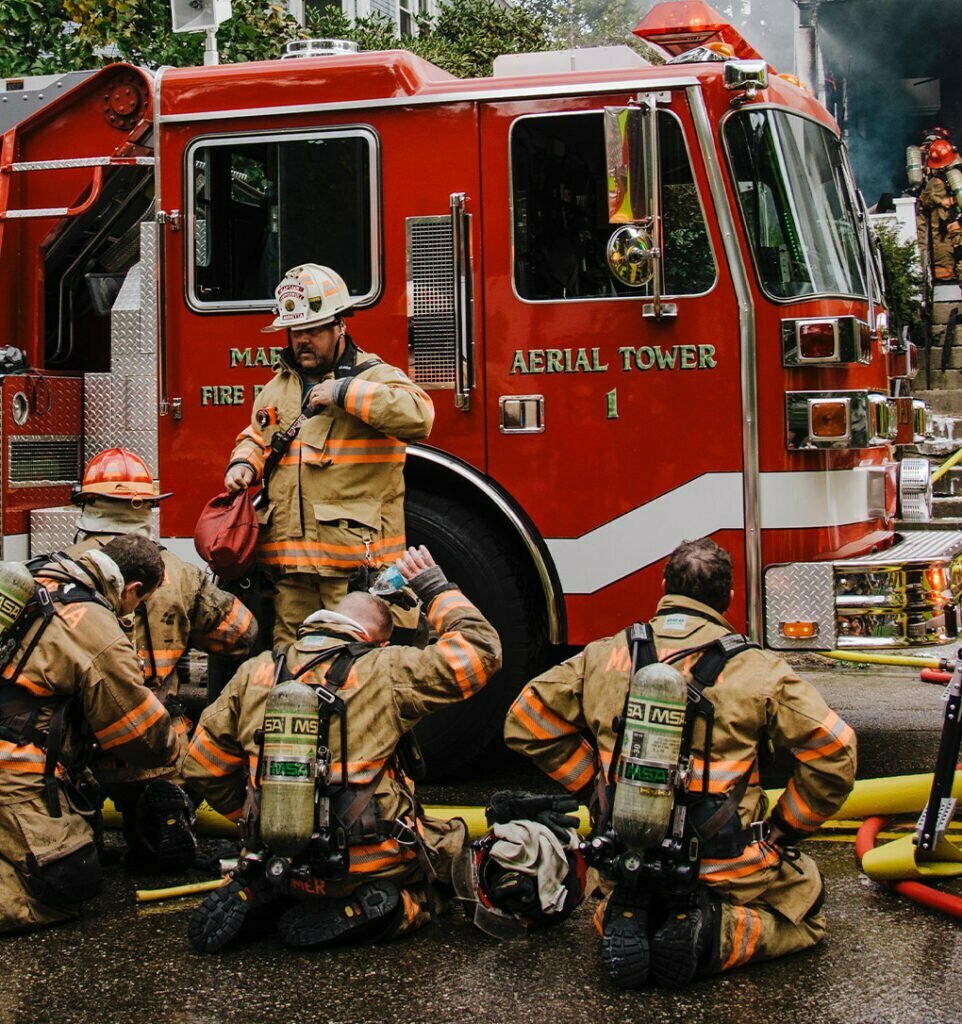Smoke inhalation is a leading cause of death among firefighters, but it’s also a common cause of acute injuries. Smoke inhalation can result in long-term neurological damage and lung disease, which can be exacerbated by toxic chemicals and carcinogens in the smoke. The Fire Smoke Coalition maintains a database with therapies used to treat smoke inhalation in firefighters with the goal of improving care and reducing long-term injury.
Best Firefighter Injury LawyersIn California
Few firefighters are killed while performing their duties, but many are injured. These firefighter injuries are not always immediately apparent in the case of smoke inhalation and diseases that may not manifest symptoms for years.
Every year, the National Fire Protection Association estimates 62,000 firefighter injuries, with about 70 fatalities, happen on the job. The following are the most common injuries firefighters suffer and the long-term impact.

Top Attorneys For Firefighter Injury Claims
Roof collapse is one of the greatest concerns of any firefighter, and it can be difficult to mitigate the risk. As a building loses structural integrity, firefighters attempting to rescue someone from a burning structure may become trapped by a roof or ceiling collapse. In recent years, roof collapses have killed dozens of firefighters and injured many more. In Wichita in 1968, four firefighters were killed by a collapsing roof, making it one of the most infamous accidents. In 2010, two Chicago firefighters were killed and seventeen were injured when the roof of a burning building collapsed.
California’s Expert Firefighter Injury Lawyers
62,000+
Firefighter injuries happen annually.
70+
Firefighters, on average, end up losing their lives on the job annually.
Best rated construction accident attorneys In California
According to the Occupational Safety and Health Administration (OSHA), falls from varying heights are the most dangerous potential hazard for construction workers. According to the Bureau of Labor Statistics, falls account for nearly forty percent of construction worker fatalities.
Scaffolding is a common cause of falling injuries among construction workers. Scaffolding may collapse or become unstable enough to cause a worker to lose their balance and fall in certain circumstances. There may be spinal cord injuries, crush injuries, or broken bones as a result.
Most trusted firefighter injury lawyers
Burns account for almost 8% of all injuries among firefighters. These burns include scalds, flame burns, and contact burns. In most cases, firefighters suffer burns to their face, but burns to the arms and hands are also common. Burns are classified as first-, second-, or third-degree burns, depending on their severity. While all burns can lead to disfigurement, serious burns can lead to disability, chronic pain, multiple surgeries, and an inability to work.
While firefighting may not carry a high risk of death on the job, firefighters frequently face dangerous conditions that can lead to long-term lung and heart disease, cancer, burns, and more. Firefighters who are injured or develop a disease or chronic illness as the result of their job typically qualify for workers’ compensation benefits. Many states have even adopted presumption laws that allow firefighters to receive benefits after a cancer diagnosis without working to prove their cancer was caused by specific exposure on the job. If you have suffered injuries or illness as a firefighter, a workers’ compensation attorney can help you build your case and fight for the benefits you deserve.

Best Rated Firefighter Injury Attorneys In California
Firefighters are often exposed to hazardous materials which may cause respiratory disease, chronic illness, or even cancer — especially when burning. The NFPA estimates there are nearly 35,000 exposures every year to asbestos, chemicals, and dangerous fumes, or about 33 exposures for every 1,000 hazardous condition runs.
Compared to the general population, firefighters have a 9% increased risk of cancer and a 14% increased risk of dying from cancer. Cancer is the leading cause of death among firefighters and is frequently an occupational hazard. In the past, the majority of firefighter cancers were caused by asbestos exposure, but today leukemia and lymphoma are also common. In 2002, 200 Boston firefighters responded to a fire at a power plant, as reported by NBC. By 2017, approximately a quarter of the population had been diagnosed with cancer or a cardiovascular disease. Numerous of these cancers are uncommon and affect young firefighters.
Free Consultation
To schedule your free and confidential case review call us at 888-597-4099 or fill out the form below.
Client Testimonials
The Oracle team was always available and guided me through the process. Most importantly, they got me an amazing settlement.
They will make sure you get the best medical treatment and compensation for your injuries. A+++
They were always responsive to my needs and questions. Best yet, they got me a great settlement! I totally recommend Oracle. Thank you again!
